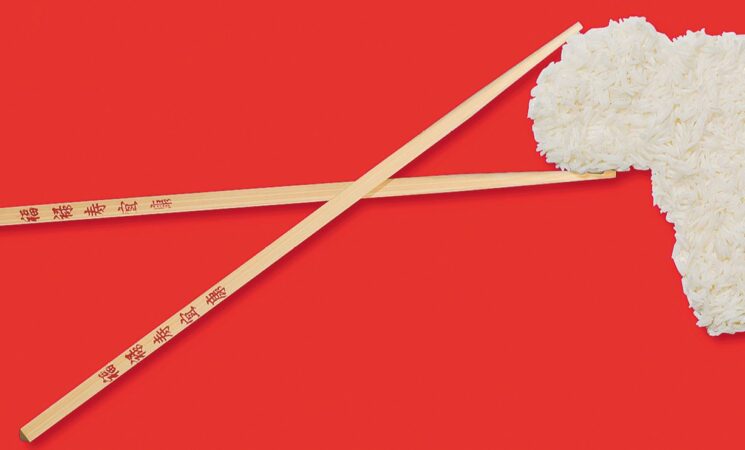17 March 2019, NIICE Commentary 2397
Federica Russo
The concept of the waiguo (foreign lands) and the guojizhixu (international order) was not defined in China until the Tang Dynasty (618-907 AD). Even until the Song Dynasty (960-1279 AD), the Empire was not aware of the relationships with its neighbors, and the external world. Since then, the idea of the Middle Kingdom took shape and it is still fundamental in the framework of the international scenario by following, as Kerry Brown of the Lau China Institute at the King’s College suggests, a pragmatic attitude which merges the bitterness associated to the defeats suffered in the past with the desire of being strong, influent and long-term oriented. According to Brown, this is what leads to the division of the world as seen by Beijing’s leadership into four different areas on the basis of the specific interest: the USA, the Asian Region, the European Union, and Africa-Latin America-Middle East.
But the increasing engagement in Africa has raised serious concerns in the West. The biggest question among the international audience is – What are the real intentions of China? However, in order to understand the Sino-African relationships, their deep roots must be traced.
In 1955, Indonesia hosted the Bandung Conference which brought together 25 Asian and African countries by laying the groundwork for economic and cultural relations which, in the course of time, have evolved significantly with the involvement of more countries and the birth of new multilateral relationships. However, the first Forum on China-Africa Cooperation was born only in November 2006 in Beijing under the theme of “friendship, peace, cooperation and development.” Since then the leaders of Member States meet every three years to discuss the future perspectives of their countries. In September 2018, the 7th Forum on China-Africa Cooperation took place in Beijing, where the Chinese President Xi Jinping confirmed that China will provide USD60 billion to Africa, which will be added to the USD170 billion already placed on the continent during the last 9 years. The financial aid- diversified into interest free loans, grants, credit lines, concessional loans and investments in infrastructures- is going to make a huge impact on the political, social, and economic developments of Africa. In addition to Nairobi-Mombasa and Addis Abeba-Djibouti railway lines, for example, China has also involved itself in the development of the Center for Disease Prevention and Control which is crucial in computing ebola. To name a few others, the construction of the biggest hydro dam of Africa in Ethiopia; 767km gas pipeline between Ethiopia and Djibouti; and the solar-powered miling plants in Zambia are being developed by Chinese. These huge projects have not only created job opportunities but are going to bring rapid economic transformation though enhance international trade.
China’s aid and economic cooperation model in Africa differs from what has been implemented by the USA and the EU. China emphasizes on investments in infrastructure, projects to reduce production costs that can ensure markets access, cultural exchanges to develop human capital, and manufacturing hubs. On the contrary, aid provided by the West has floating interest rates for roans and conditions in annex often disregarded by African governments.
African countries are suffering from crisis such as poverty, epidemics, corruption on which the collective imagination is focused, but this is not sufficient to describe a complex reality where imperceptible changes constantly occur. Africa is the fastest growing continent in the world, its new and emerging leaders are more educated and competent than their predecessors, and the number of the democracies has gone up by three times in Africa in last one decade.
In recent years, West has been criticizing Chinese projects in Africa. They have been accusing that there is a lack of transparency, mounting corruption, exploitation of resources, an interference in internal affairs, as well as a mechanism of debt traps. However, there are no robust evidences to prove those accusations when we analyze some data. Chinese investments have included projects in Mauritius which has no resources to offer, in addition, by considering the negative consequences experienced by China when she supported the revolution in Tanzania, Algeria, and Ghana there is no reason to believe that Beijing would like to repeat such adventurism. Moreover, Deborah Brautigam, Professor at Johns Hopkins University and the author of “The Dragon’s Gift”, claims that the available information suggest that Chinese loans are provided to countries which are able to repay. Brautigam further argues that less concessional loans are offered to countries such as Nigeria, Sudan, and Angola which have sufficient resources to deal with eventual collateral consequences, while grants and zero interest loans are received by smaller economies like Togo, Mali, Burundi. An exception consists of countries which are beneficiaries of loans to finance projects in spite of their economic condition, where the project itself becomes a guarantee. Lastly, what is most important in Sino-African ties is the need to trace the history of African countries marked by colonialism and their humiliation for centuries, which has created space for Chinese. This is a sort of lowest common denominator, a pain still vivid in the mind of every African. This has created a favorable environment for the “Chinese Rejuvenation” to become a dream which could be exported to African countries.



